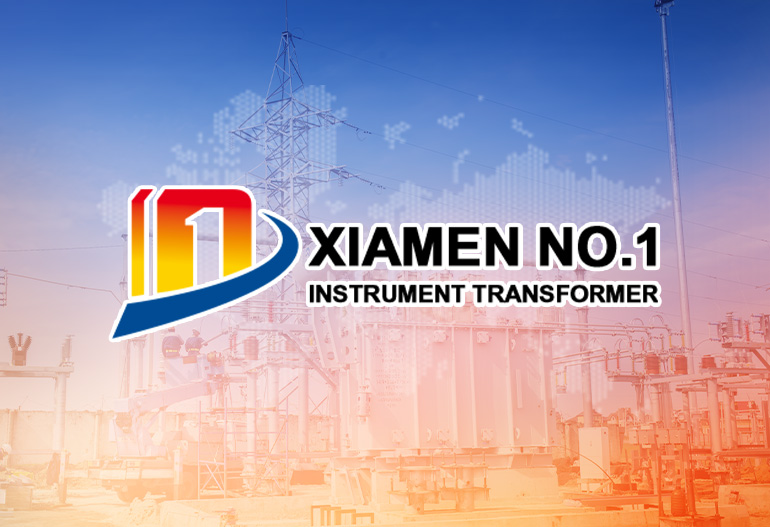Outdoor Voltage Transformers in High-Altitude Power Systems
A 33kV VT rated for sea level may experience partial discharge (PD) or flashover at 3,000m due to reduced air insulation capacity.
Surface creepage distances (critical for preventing tracking between live parts and ground) become insufficient, as thin air reduces the ionization threshold for pollutants (e.g., dust, salt) on insulator surfaces.
A dry-type VT operating at 4,000m may run 15–20°C hotter than at sea level, accelerating insulation aging (e.g., epoxy hardening, paper degradation).
Solar radiation, intensified at high altitudes, adds additional thermal load, increasing peak operating temperatures.
UV radiation breaks down polymer insulators (e.g., silicone rubber), causing cracking and reduced hydrophobicity.
Large diurnal temperature swings (e.g., -20°C to 30°C in a single day) create thermal stress, leading to delamination in composite materials or seal failures in oil-immersed VTs.
Wind speeds exceeding 100 km/h can cause vibration-induced fatigue in windings and connections.
Ice loading (common in mountainous areas) increases mechanical stress on insulator sheds, risking structural failure.
Increased Creepage and Clearance: Creepage distance (the path along insulator surfaces) is extended by 10–15% per 1,000m elevation. For example, a 110kV VT at 4,000m requires a creepage distance of ~3,500mm (vs. 2,000mm at sea level) to prevent tracking. This is achieved by adding longer insulator sheds or using multi-piece insulator designs.
Pressurized Enclosures: For gas-insulated VTs (e.g., SF₆), operating pressure is increased by 10–20% to compensate for reduced external atmospheric pressure. A 220kV SF₆ VT at 3,000m may use 0.5MPa internal pressure (vs. 0.4MPa at sea level) to maintain dielectric strength.
Solid Insulation Reinforcement: Dry-type VTs use thicker epoxy insulation layers or hybrid materials (e.g., epoxy-silicone composites) to reduce reliance on air insulation. For instance, a 66kV dry-type VT at 5,000m may have insulation thickness increased by 30% compared to a sea-level design.
Field Grading Optimization: Finite element analysis (FEA) is used to redesign field grading rings and shields, ensuring uniform electric field distribution despite reduced air insulation. This minimizes PD at conductor edges and insulator interfaces.
Enhanced Heat Sinks: Finned enclosures with increased surface area (20–30% larger than sea-level designs) improve natural convection. Fins are often angled to minimize dust accumulation (a common issue in dry, high-altitude regions).
Thermally Conductive Materials: Epoxy resins filled with boron nitride (BN) or aluminum nitride (AlN) nanoparticles boost thermal conductivity by 50–80%, facilitating heat transfer from windings to enclosures.
Solar Shielding: Reflective coatings (e.g., white silicone) on enclosures reduce solar absorption by 30–40%, lowering peak temperatures by 10–15°C.
Temperature Limiting Designs: Windings are rated for higher temperature classes (e.g., Class F (155°C) instead of Class A (105°C)) to accommodate elevated operating temperatures without insulation failure.
UV-Resistant Polymers: Silicone rubber insulators are formulated with UV stabilizers (e.g., cerium oxide) to extend service life from 15 to 25+ years.
Low-Outgassing Sealants: Gaskets and adhesives with minimal volatile organic compounds (VOCs) prevent contamination of insulation surfaces, which is critical in thin air where pollutants persist longer.
Thermal Shock-Resistant Composites: Core and winding materials with matched coefficients of thermal expansion (e.g., glass fiber-reinforced epoxy and copper) reduce delamination risk during temperature swings.
Hermetic Sealing: Oil-immersed VTs use double-seal systems (e.g., O-rings and metal gaskets) to prevent oil leakage, which is more likely at high altitude due to pressure differentials.
Wind-Resistant Mounting: Base plates and brackets are reinforced to withstand wind loads up to 1.5 kPa (equivalent to 100 km/h winds), with vibration dampers to reduce resonance.
Icephobic Coatings: Insulator sheds are coated with hydrophobic materials (e.g., fluoropolymers) to minimize ice accretion, reducing mechanical stress and maintaining creepage distance.
Seismic Hardening: Windings are potted in flexible epoxy to absorb seismic vibrations, while connections use crimped or soldered joints to resist loosening during tremors (common in mountainous regions).
Epoxy-Silicone Hybrid Insulation: Combines epoxy’s mechanical strength with silicone’s UV resistance and hydrophobicity.
Extended Shed Design: Insulator sheds with 50% more surface area than standard designs to meet increased creepage requirements.
Application: Ideal for 33kV–110kV systems at 1,000–4,000m, such as in mountainous distribution networks.
Pressure-Compensated Enclosures: Internal pressure adjusts with altitude to maintain a constant dielectric strength margin (e.g., 20% above rated voltage).
Hermetic Construction: Welded metal enclosures prevent SF₆ leakage, critical for both performance and environmental compliance (SF₆ is a potent greenhouse gas).
Application: Used in 220kV+ transmission substations in Himalayan or Andean regions, where air insulation alone is insufficient.
Expansion Tanks with Pressure Relief Valves: Compensate for oil volume changes due to temperature and altitude, preventing tank rupture.
Porcelain Insulators with Extended Sheds: Porcelain’s resistance to UV and temperature shock makes it suitable for harsh climates, with sheds spaced to maximize creepage.
Application: Common in remote 33kV–66kV substations where maintenance access is limited (oil-immersed designs have longer lifespans with proper sealing).
Altitude Simulation Testing: VTs are tested in low-pressure chambers to simulate conditions at target elevations, verifying insulation withstand (e.g., 1-minute power frequency test at 1.5× rated voltage) and PD levels (<5pC at rated voltage).
Thermal Cycling: Exposure to -40°C to 60°C cycles (500+ cycles) to test for delamination or seal failures.
UV Aging: Accelerated UV exposure (equivalent to 20 years at 4,000m) to evaluate polymer insulator integrity.
Mechanical Load Testing: Wind tunnel testing (up to 120 km/h) and ice loading (10mm radial ice) to validate structural strength.
Challenge: Elevation 3,500m, with 150 km/h winds, -25°C to 28°C temperature swings, and high UV exposure.
Solution: Dry-type resin-cast VTs with:
3,800mm creepage distance (25% longer than sea-level 110kV VTs).
BN-filled epoxy insulation (thermal conductivity 0.8 W/m·K vs. 0.3 W/m·K standard).
UV-resistant silicone coating and reinforced mounting brackets.
Performance: Operating temperatures remain <90°C (Class F limit), PD levels <3pC, and no tracking observed after 5 years of service.
Aerogel-Enhanced Insulation: Aerogel-filled insulation layers improve thermal resistance while maintaining dielectric strength, reducing heat buildup in dry-type VTs.
Self-Healing Polymers: Insulators with microcapsules of healing agents (e.g., silicone) that rupture and repair cracks caused by UV or thermal stress.
Active Cooling Systems: Small fans (powered by solar cells) integrated into VT enclosures, providing forced convection at high altitudes where natural cooling is inadequate.



